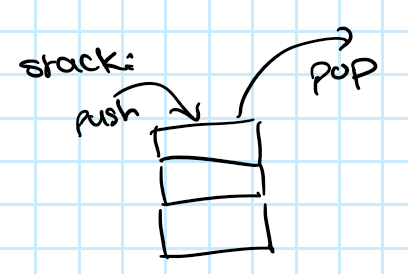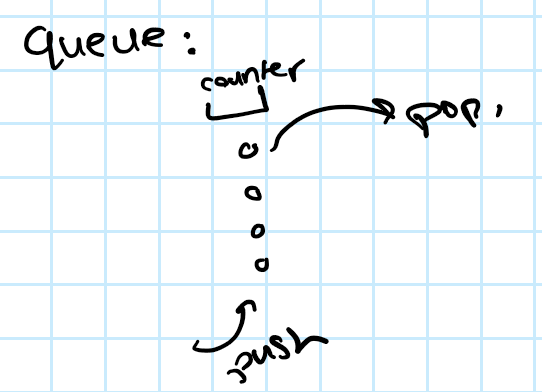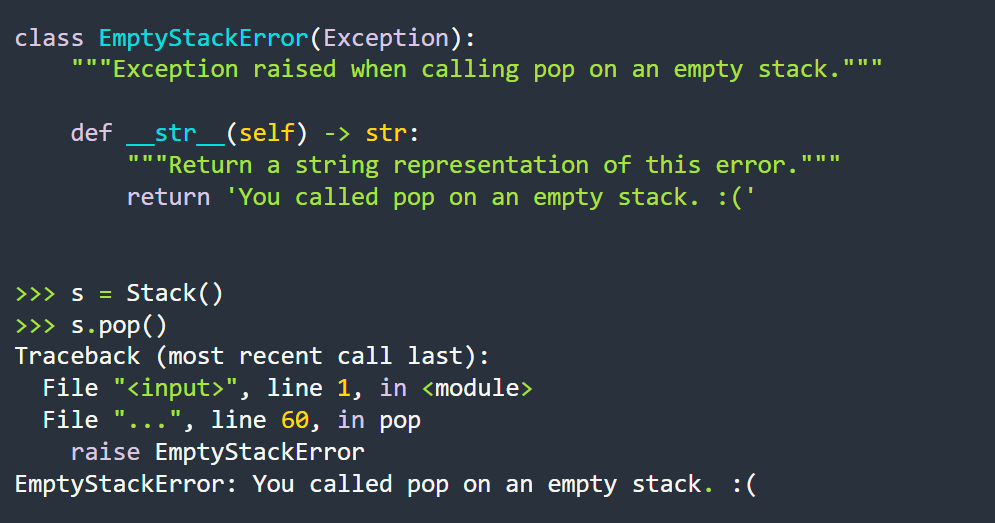4. Abstract Data Types
1/13
There's no tags or description
Looks like no tags are added yet.
Name | Mastery | Learn | Test | Matching | Spaced |
|---|
No study sessions yet.
14 Terms
abstract data type
An abstract data type (or ADT) defines some kind of data and the operations that can be performed on it.
It is a pure interface, with no mention of an implementation—that’s what makes it abstract.
ADTs vs Data structures
ADTs are concerned with the what: what data is stored, and what we can do with this data.
Data structures are concerned with the how: how is that data stored, and how do we actually implement our desired methods to operate on this data?
5 famous ADTs
set
multiset
list
map
iterable
(and stack and queue we will learn lolz)
Set
Data: a collection of unique elements
Operations: get size, insert a value (without introducing duplicates), remove a specified value, check membership
Multiset
Data: a collection of elements (possibly with duplicates)
Operations: same as Set, but the insert operation allows duplicates
List
Data: an ordered sequence of elements
Operations: access element by index, insert a value at a given index, remove a value at a given index
Map
Data: a collection of key-value pairs, where each key is unique and associated with a single value
Operations: lookup a value for a given key, insert a new key-value pair, remove a key-value pair, update the value associated with a given key
Iterable
Data: a collection of values (may or may not be unique)
Operations: iterate through the elements of the collection one at a time.
correspondance between ADTS and data structures
there is NOT a one-to-one correspondence between ADTs and data structures
A single ADT can be implemented by many different data structures
python list, dict are data structures
each data structure can be used to implement multiple ADTs.
The Python
listcan be used to implement not just the List ADT, but each of the other above ADTs as well.
Stack ADT
Data: a collection of items
Operations: determine whether the stack is empty, add an item (push), remove the most recently-added item (pop)

Queue ADT
Data: a collection of items
Operations: determine whether the queue is empty, add an item (enqueue), remove the least recently-added item (dequeue)

user-defined exception
we define our own type of error by making a subclass of a built-in class called Exception.
overriding the inherited __str__ method in our class
raise EmptyStackError

normal flow of control in a program
pushing a stack frame whenever a function is called, and popping the current (top) stack frame when we reach a return or reach the end of the function/method.
Exceptions interrupt the normal flow of control
immediately, the function ends and its stack frame is popped, sending the exception back to the caller, which in turn ends immediately, sending the exception back to its caller, and so on until the stack is empty